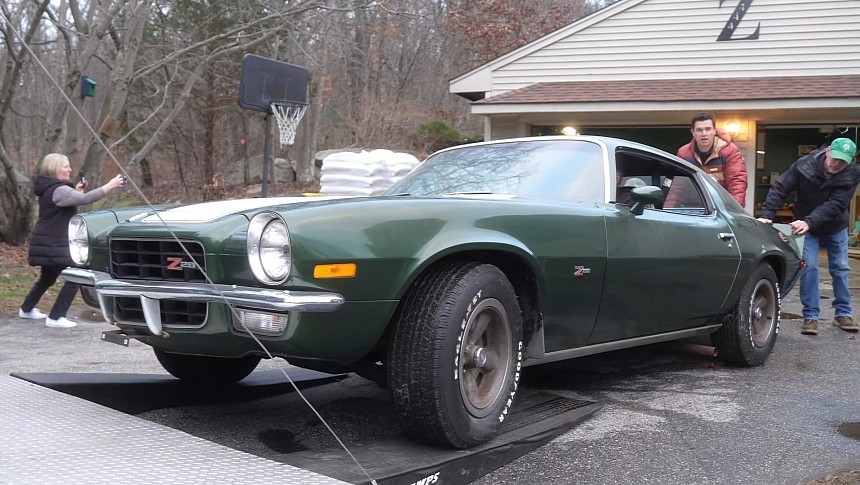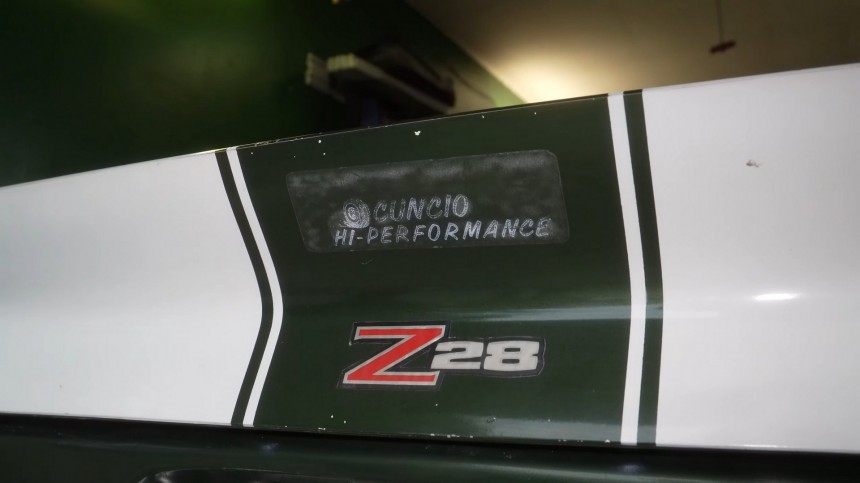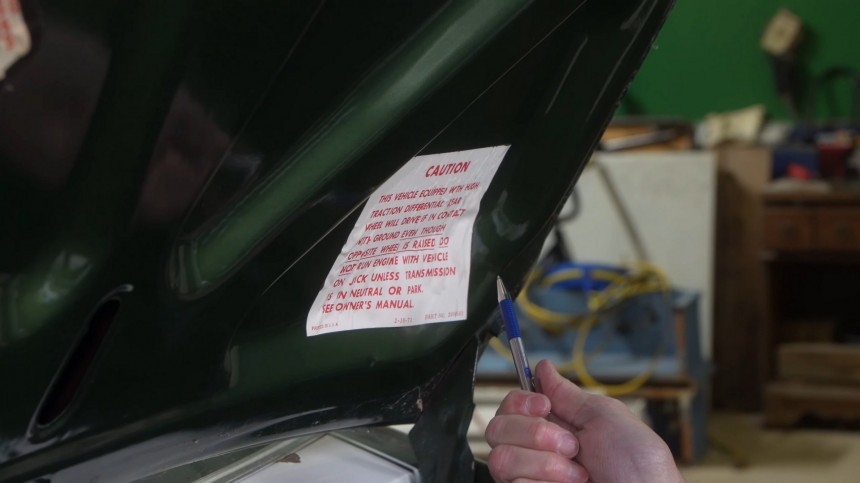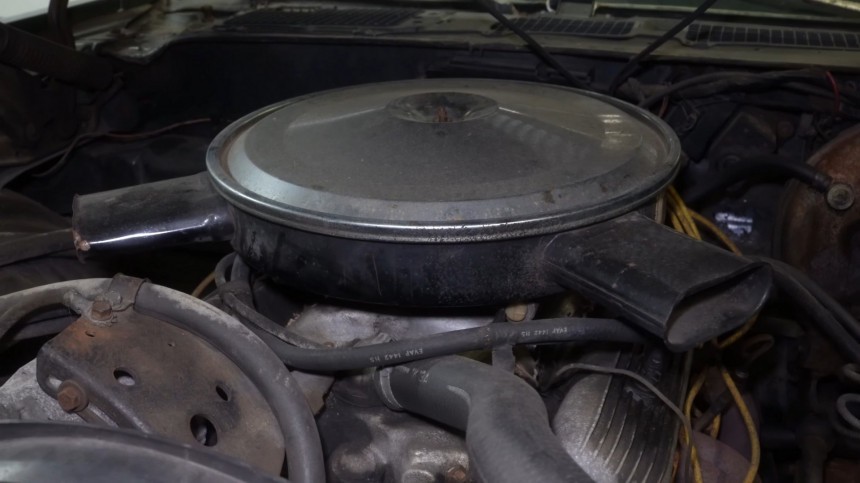The second-generation Camaro was the longest-running version of the fabled nameplate from Chevrolet, spanning 12 model years from 1970 to 1981. A heavily restyled body and other adaptations to increasingly oppressive market conditions made the Camaro the last true pony car to carry on through – and beyond – the Malaise. Overall, Chevrolet built almost 2 million examples during the lengthy generation, and none of them had a rag top. But some of them had something better: a hot-as-hell engine.
The Z28 is the most recognizable alphanumeric code by any Camaro enthusiast, irrespective of the model year of the car whose grille it adorns. The general consensus is that 1972 was the last year when Detroit actually installed ‘Excitement’ in cars—asphyxiating regulations, demanding clean(er)-running engines, capped performance mercilessly.
The second-generation HEMI walked out of the scene at the end of 1971, never to be seen again. Also, that year saw another walkout that almost killed a Chevrolet. This time, it wasn’t the federal government’s pressure on the company but the downside of capitalism: a labor strike. The early seventies weren’t the most extraordinary times for GM, with long strikes marring production. At one point, the Camaro was short-listed for termination.
Luckily, it survived, not once but twice, in 1971 and 1972 – even if it came out in lower numbers. For example, in ’72, Chevrolet assembled only 68,651 Camaros – the lowest volume ever between its launch in 1967 and 1990. Proportionally, the special versions of that year are also scarce. The Z28 emblem was slapped onto 2,575 vehicles.
Small wonder since the package was about one-quarter of the price of a base eight-cylinder model. The regular V8 Camaro retailed at $2,820, and the high-performance option was $769. It's not exactly the greatest recipe for boosting sales, but it's precisely the best recipe for fun, at least in that year’s Camaros.
The Special Performance Package offered a hot 350 cubic-inch (5.7-liter) motor with 255 hp and 280 lb-ft (259 PS, 380 Nm) net output. Not the high-numbers superstar of the previous years (1970-1971) due to a lowered compression ratio (8.5:1), but it was still a tire-devouring creation. Especially when said engine was coupled to a four-speed (preferably a close-ratio M21 or the heavy-duty M22 Rock Crusher) and the optional heavy-duty 4.10:1 rear axle.
As standard, the diff on a Z28 was Positive Traction, regardless of the gearing. 3.73 was regular, but the fun one mentioned above was better at doing Z28 stuff, like getting to the 440-yard end of a flat strip of tarmac. The hottest Camaros (the Z28 had more power than the SS, despite the latter having a 396 V8 – which was actually a 402-cube/ 6.6-liter) with this rubber-smoking rear were less than 1% of the total model production for 1972.
Six hundred fifty-two customers ordered the $12 high-ratio differential, and each had the pleasure of reading the following fun-and-games advertisement on a sticker on the deck lid: ‘Caution. This vehicle equipped with high traction differential. Rear wheel will drive in contact with ground even though opposite wheel is raised. Do not run engine with vehicle on jack unless transmission is in neutral or park. See owner’s manual.’
You can read it at the 23:10 mark in the video below, where one magnificently preserved example is featured. Owned by the same family since new, this Sequoia Green hard-punching Camaro is just as original as the day it left the assembly plant in January 1972. It was ordered by a fresh high-school graduate as a gift to himself, and it garnered only 32,444 miles since (52,202 kilometers).
The car has all the goodies I detailed earlier: the Z28-only 350-cube V8, the four-speed manual (close ratio, but not Rock Crusher), and the 4.10 rear. Again, this get-up-and-go gearing was a twelve-buck add-on, but only one out of every 105 buyers opted to have it on their cars. Granted, it wasn’t a very cruise-friendly piece of equipment. Also, it probably hit the wallet hard since the engine had to work overtime to get up to highway speeds.
But commuting wasn’t a Z28’s primary purpose in life – unless the driver lived about 1,320 feet away from your destination and had to go that distance several times a day, on weekends, on a one-way piece of arrow-straight asphalt. Sadly, the original owner of this 1972 Camaro didn’t enjoy his toy for too long: in 1986, the man left the car in the care of his widow. The lady always kept the vehicle with magnificent devotion – the rowdy Chevy has never touched snow.
Several features are unique to this particular Z28 – the steering wheel is not the four-spoke Sport model, there’s no console between the bucket seats, and the exhaust tips shoot out the sides, just in front of the rear wheels. This extra-special Z28 was custom-ordered at Scuncio Chevrolet In Rhode Island. The dealership’s dedicated High-Performance Manager, Robert (Bob) Johnson, took care of every fast-and-fun order, including this absolutely stunning original survivor.
The second-generation HEMI walked out of the scene at the end of 1971, never to be seen again. Also, that year saw another walkout that almost killed a Chevrolet. This time, it wasn’t the federal government’s pressure on the company but the downside of capitalism: a labor strike. The early seventies weren’t the most extraordinary times for GM, with long strikes marring production. At one point, the Camaro was short-listed for termination.
Luckily, it survived, not once but twice, in 1971 and 1972 – even if it came out in lower numbers. For example, in ’72, Chevrolet assembled only 68,651 Camaros – the lowest volume ever between its launch in 1967 and 1990. Proportionally, the special versions of that year are also scarce. The Z28 emblem was slapped onto 2,575 vehicles.
The Special Performance Package offered a hot 350 cubic-inch (5.7-liter) motor with 255 hp and 280 lb-ft (259 PS, 380 Nm) net output. Not the high-numbers superstar of the previous years (1970-1971) due to a lowered compression ratio (8.5:1), but it was still a tire-devouring creation. Especially when said engine was coupled to a four-speed (preferably a close-ratio M21 or the heavy-duty M22 Rock Crusher) and the optional heavy-duty 4.10:1 rear axle.
As standard, the diff on a Z28 was Positive Traction, regardless of the gearing. 3.73 was regular, but the fun one mentioned above was better at doing Z28 stuff, like getting to the 440-yard end of a flat strip of tarmac. The hottest Camaros (the Z28 had more power than the SS, despite the latter having a 396 V8 – which was actually a 402-cube/ 6.6-liter) with this rubber-smoking rear were less than 1% of the total model production for 1972.
You can read it at the 23:10 mark in the video below, where one magnificently preserved example is featured. Owned by the same family since new, this Sequoia Green hard-punching Camaro is just as original as the day it left the assembly plant in January 1972. It was ordered by a fresh high-school graduate as a gift to himself, and it garnered only 32,444 miles since (52,202 kilometers).
The car has all the goodies I detailed earlier: the Z28-only 350-cube V8, the four-speed manual (close ratio, but not Rock Crusher), and the 4.10 rear. Again, this get-up-and-go gearing was a twelve-buck add-on, but only one out of every 105 buyers opted to have it on their cars. Granted, it wasn’t a very cruise-friendly piece of equipment. Also, it probably hit the wallet hard since the engine had to work overtime to get up to highway speeds.
Several features are unique to this particular Z28 – the steering wheel is not the four-spoke Sport model, there’s no console between the bucket seats, and the exhaust tips shoot out the sides, just in front of the rear wheels. This extra-special Z28 was custom-ordered at Scuncio Chevrolet In Rhode Island. The dealership’s dedicated High-Performance Manager, Robert (Bob) Johnson, took care of every fast-and-fun order, including this absolutely stunning original survivor.



























